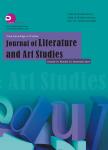
T=题名(书名、题名),A=作者(责任者),K=主题词,P=出版物名称,PU=出版社名称,O=机构(作者单位、学位授予单位、专利申请人),L=中图分类号,C=学科分类号,U=全部字段,Y=年(出版发行年、学位年度、标准发布年)
AND代表“并且”;OR代表“或者”;NOT代表“不包含”;(注意必须大写,运算符两边需空一格)
范例一:(K=图书馆学 OR K=情报学) AND A=范并思 AND Y=1982-2016
范例二:P=计算机应用与软件 AND (U=C++ OR U=Basic) NOT K=Visual AND Y=2011-2016

摘要:During A.D. 776 to 848, Dunhuang was occupied and ruled by Tubo political power, a special painting style, spread via the Tibetan silk road, appeared at same time, and which is related to the art style of India and Nepal; It is worth noting that the Tibetan painting style during this period have no relative unified model actually, especially the mural and the silk painting preserved in Library cave, the painting style of which had obvious difference between each other, and the reason behind this is very hard to explain. Until the late Tang Dynasty (A.D. 848-907), sheer Pala style of eastern India appeared in Dunhuang, however, whether those East India painting style still belong to Tubo remain for further discussion. The art style of East India appeared in Dunhuang during from the late Tang Dynasty to the early period of northern Song Dynasty, probably propagated from the ways other than Tubo, and this art style was deemed as the one has nothing to do with Tibet's art in this study.
地址:宁波市钱湖南路8号浙江万里学院(315100)
Tel:0574-88222222
招生:0574-88222065 88222066
Email:yzb@zwu.edu.cn

